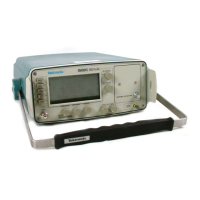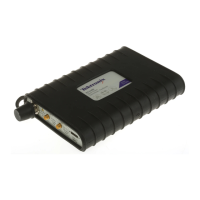Operating Instructions
1720/1721
2–17
MAGENTA
BLUE
CYAN
GREEN
YELLOW
RED
BLUE
MAGENTA
CYAN
RED
GREEN
YELLOW
45°
45°
iV
F
U
F*
–0.4
–0.2
0.2
0.4
0.2
–0.2
F=U+iV
F*=U–iV
a
–a
Figure 2-10: PAL standard color phase Vector diagram.
Saturation is the degree to which a color (or hue) is diluted by white light in
order to distinguish between vivid and weak shades of the same hue. For
example, vivid red is highly saturated and pastel red has little saturation.
Because saturation is a product of both luminance and chrominance amplitudes,
and a vectorscope can only measure chrominance amplitude, the radial distance
from the center to the end of the color vector is chrominance amplitude. If burst
vector amplitude corresponds to the 75% amplitude marking (see Figure 2-11 for
NTSC and Figure 2-12 for PAL), the colors represented by the vectors when they
are within the targets are of 75% amplitude.
If burst vector amplitude corresponds to the 100% marking and the chrominance
vectors are within the target, the color amplitude is 100%.

